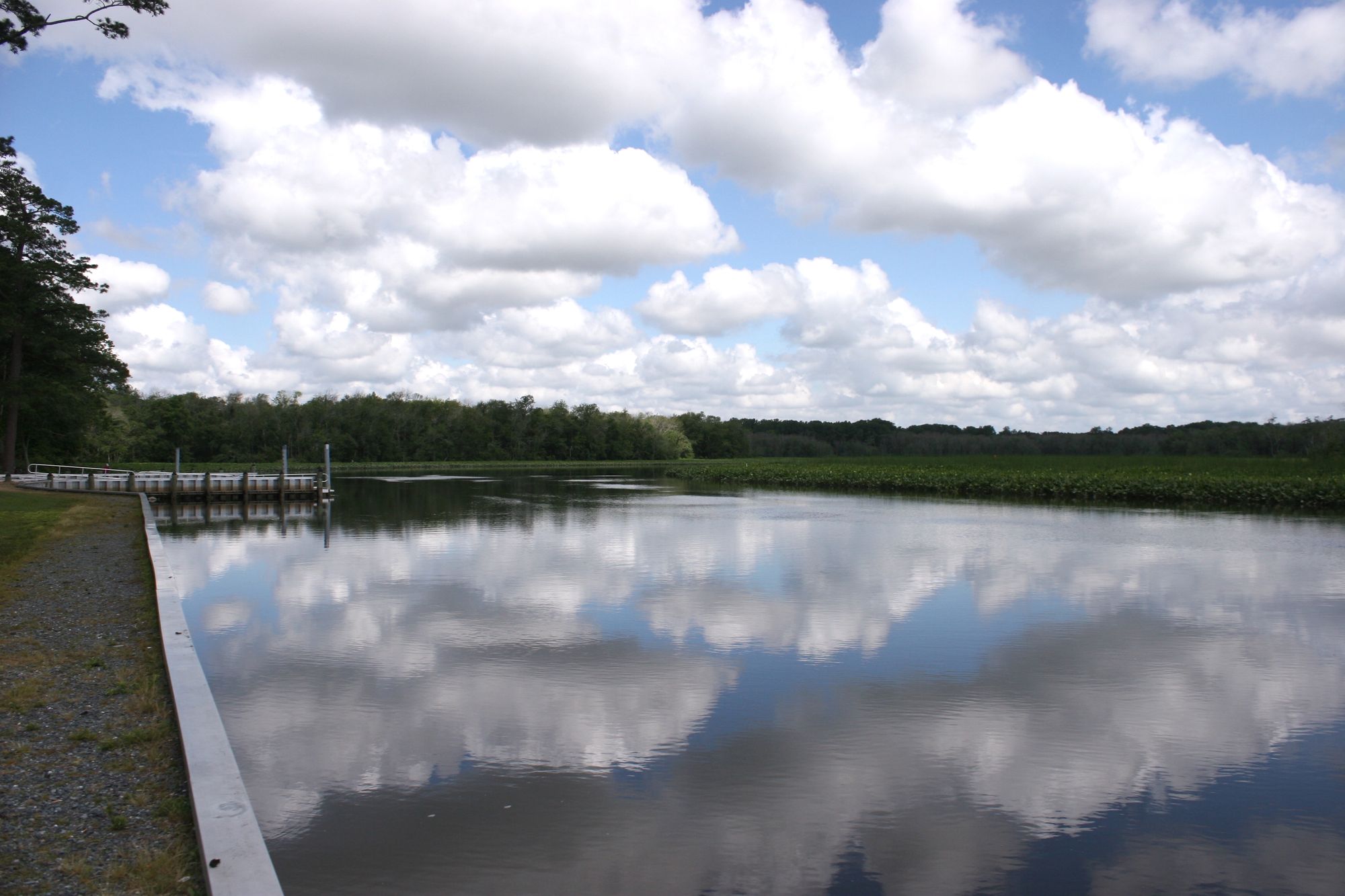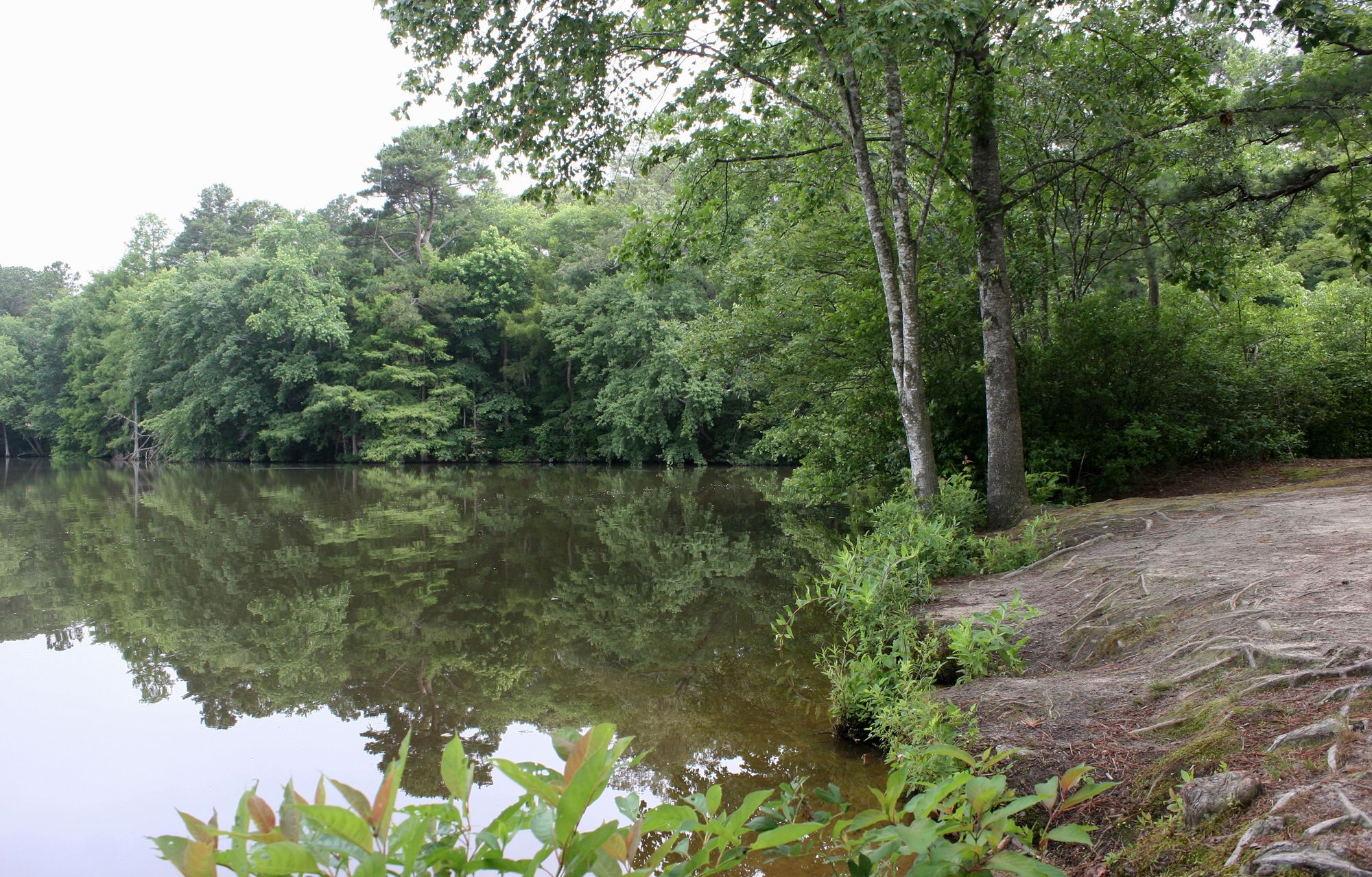This Seaford resident really wants you to give horseshoes a chance
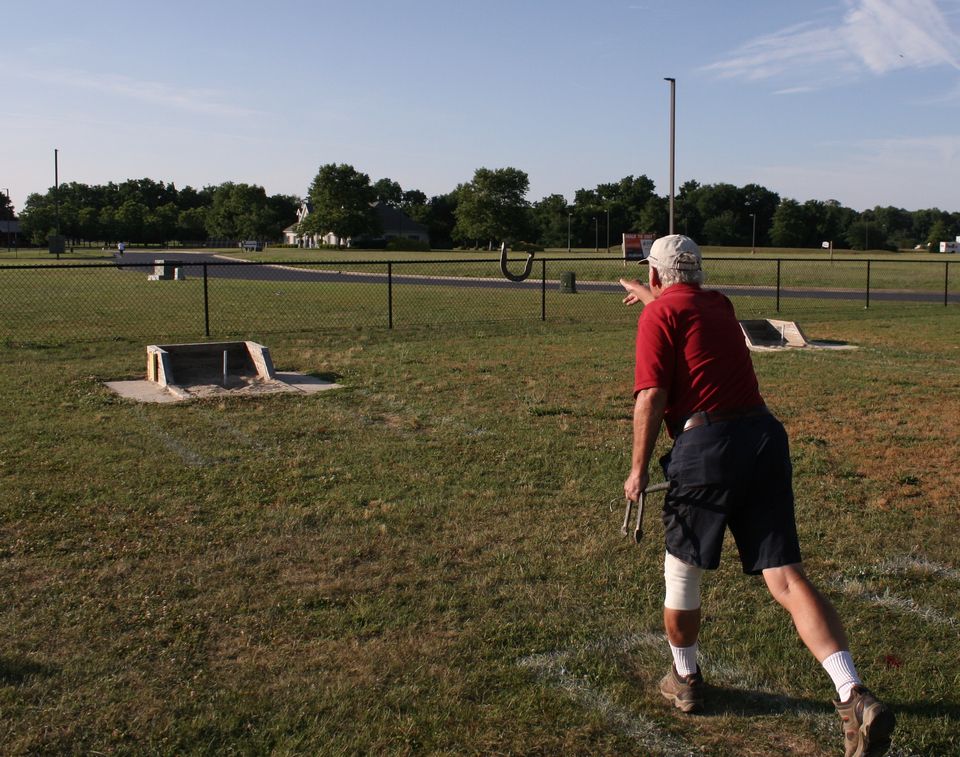
When was the last time you played horseshoes?
A small but dedicated group in Seaford hopes your answer will be “This week at Jays Nest park.” They are organized by Seaford resident Wayne Apgar, who promotes horseshoes with the enthusiasm of an evangelist.
Enthusiasm can be contagious, and even bring out a reporter who hasn't played horseshoes in years to see what's going on.
Apgar, who retired here from New Jersey, says he got out of the horseshoe habit during his career, but decided to pick it up again and hone his skills. He’s not finding a lot of like-minded people in Delaware.
“When I came down here, nobody wants to pitch horseshoes. So I’ve been trying to promote it as much as I can,” he said.
Apgar’s family took their horseshoes seriously. “We even had lights out in the yard so we could pitch at night,” he said, and his brother was the junior state champion for five years in a row in the 70s.
Most people are probably familiar with the game, which is fairly simple, albeit not easy: The basics are that you throw (pitch) a horseshoe, trying to land it around a metal stake for what’s called a ringer and scores three points. Horseshoes that simply land within 6 inches may also count for one point, hence the the old saying involving hand grenades.
In its early days, the game may have been played with actual horseshoes when the horses weren’t using them. But now those aren’t common household items. While the modern horseshoes look about the same, they’ve never been nailed to an equine hoof and are made specifically for the game.
Once a popular lawn game, horseshoes seems to be going the way of the horse and buggy. Most of the people you’ll find tossing shoes in Seaford each week are retirement aged, but recall times when there was more interest.
Apgar thinks the pastime is being replaced with cornhole, a game whose name he was reluctant to mention at first, referring instead to the “bean bag game.” This rival has exploded in popularity in recent years and has a very similar concept and scoring system. In both games, opposing players make multiple throws at a target a set distance away, and points cancel each other out each round, so only the player with the most points scores.
Bean bags are replacing the heavy steel horseshoes even among the retired age group. Apgar said one of their regulars is from Heritage Shores, the 55-plus development in Bridgeville, and cornhole tournaments up there can draw more than 100 people. Heritage Shores does have horseshoe pits, but they are little used, he said.
“There’s a lot of retired people down here who used to pitch, and that’s what we’re finding, people used to pitch and just fell away from it,” Apgar said.
“One of the biggest issues with horseshoes is people aging out and then not being replaced,” said Michael Nemschick, a Georgetown resident.
He’s one of about five or so people who join Apgar at the Jays Nest park in Seaford, which boasts multiple well-tended horseshoe pits. They play Monday nights at 6 p.m., and Thursday mornings at 10 a.m.
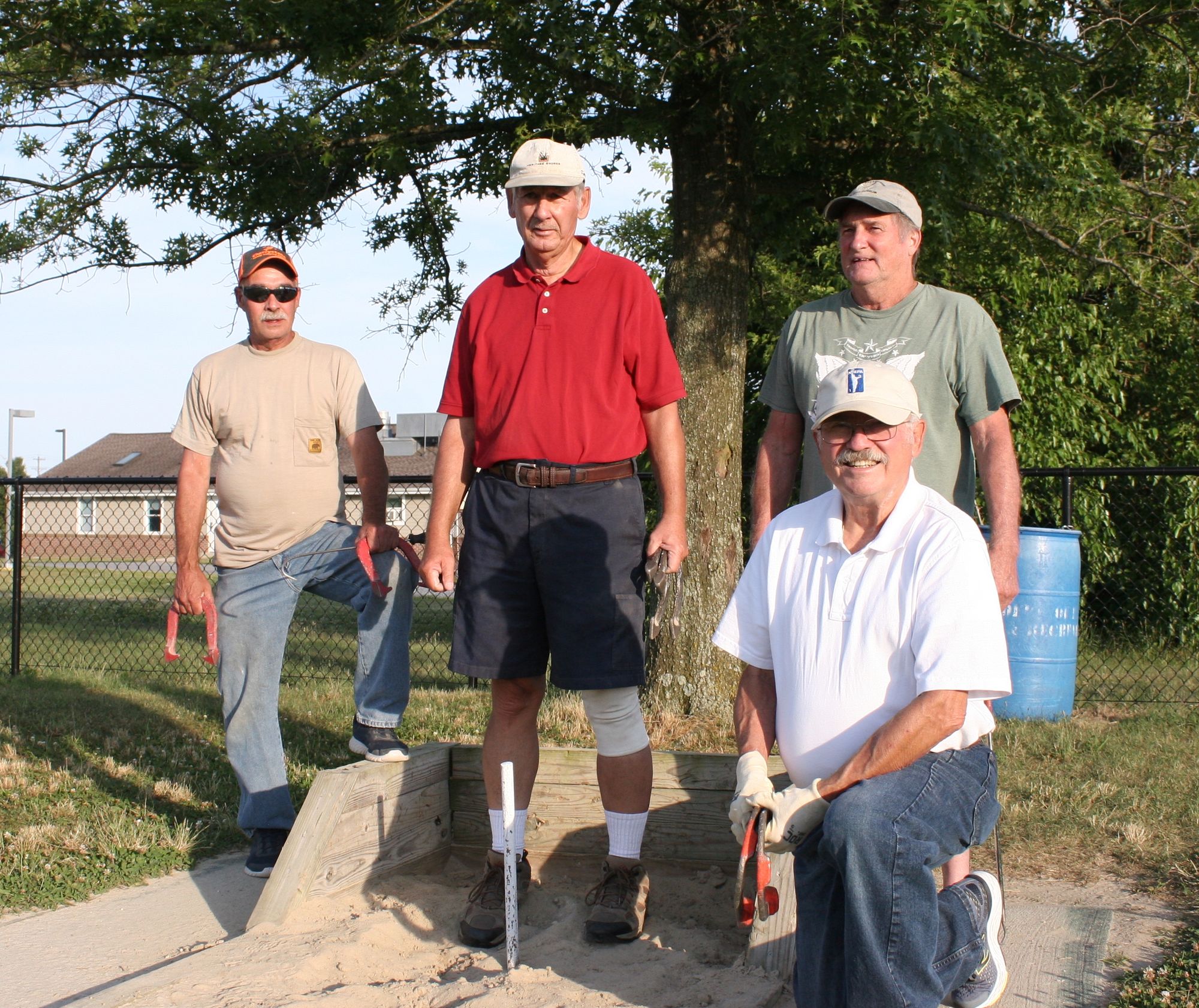
Apgar’s message is that it’s both fun and good exercise. “I’ve been advertising it as a health program, also a fitness program. You’re bending, you’re walking, you’re pitching, you’re doing all kinds of shoulder moves.”
If you’re a part of any of the local Facebook information groups in western Sussex County, you’ve likely seen Apgar’s posts, where he frequently invites the community out for horseshoes sessions. People of all kinds drop into these social media groups to promote their businesses and events and share local news, but Apgar is a lone and persistent voice for horseshoes, drawing on his experience in real estate sales to make his sales pitch for the game.
On a recent cool, sunny early summer evening, the regulars Apgar has gathered so far started showing up even before 6. The ringing clank of well-thrown horseshoes hitting the stake began as they threw a few warmup rounds.
“It’s a good relaxing sport, I think. (You) meet some nice guys,” Nemschick said.
“Personally, I like to compete,” Ed Nunn, a Blades resident, said. “... I’m tired of sitting around watching TV. I’d rather be out here.”
They’re here to have fun, but they also want to win, and they don’t count on horseshoes for luck.
“My father used to beat me all the time,” Apgar said, recalling his family’s competitiveness around the game. “... I would get so frustrated.”
Now, he practices in his yard to hone his skills. It’s a game of precision, he said. “You get a 3 inch opening to go around a 1-inch stake … it’s not just a matter of being lucky.”
The different players use different releases. Apgar uses a style called the turn shoe, and tries to “schedule the shoe,” throwing it so it does one and a quarter turn on the way to the stake. Nemschick throws the same way, but he’s shooting for a one and three quarter turn.
If controlling a horseshoe's spin like that sounds impossible, Apgar says it comes with practice.
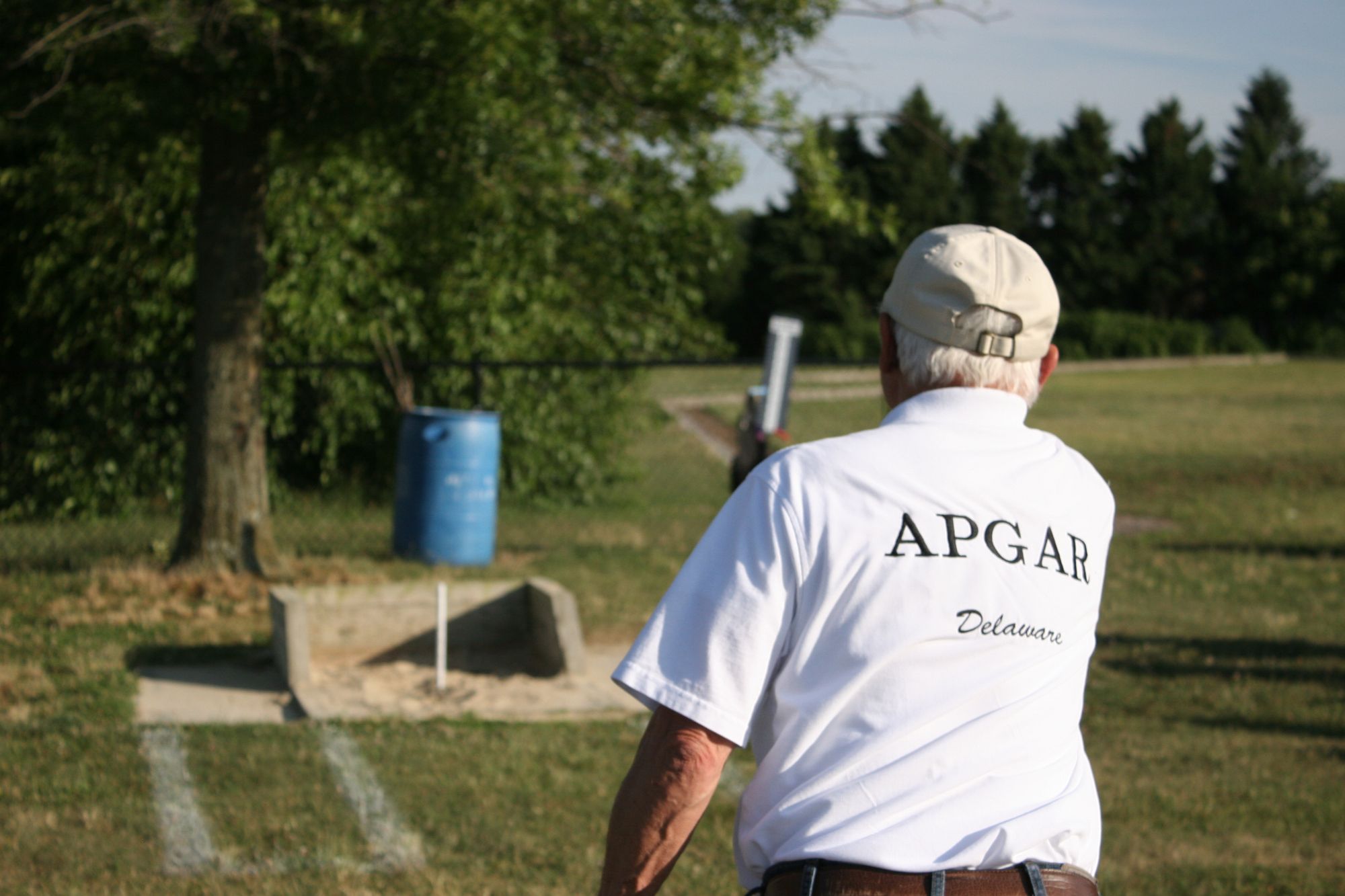
The turn shoe is favored by the best players, Nunn told me. For his part, Nunn throws the horseshoe end over end. His method was working quite well for him that evening, as he landed ringer after ringer and set his opponents down with ease.
Another of the participants, Philip Murphy of the Laurel area, cautioned against holding the horseshoe too tightly, which can cause it to flip more. One of his friends, he said, throws the horseshoe sideways, Frisbee style, “and he got it down pat.” He says it’s whatever the player is comfortable with.
Like tennis, horseshoe pits have different surfaces that change the playing style. Pits can be made of the dirt in someone’s backyard, sand like at the park in Seaford, or clay. If it’s sand, players can land the shoe in front of the stake and slide it in, Nunn said, but clay is not so forgiving.
Horseshoes can be a mind game, like golfing. Apgar said he threw 70 percent ringers in a couple recent sessions practicing at his house, but at an official National Horseshoe Pitchers Association tournament, his average dropped to 33 percent (a pace that would still easily dominate the field at most Fourth of July picnics.)
The talk turned to a recent stellar performance by a Georgia player who threw 37 ringers out of 40 tries for a 92.5 percent average. Nunn then mentioned Alan Francis, a legendary Ohioan he called the world’s best player. Francis has won more than 20 world championships, including last year, and averages nearly 90 percent ringers.
The “world” in reference here is more like baseball’s World Series, which is only held in North America. Horseshoes is most popular in the U.S. and Canada, according to the Encyclopedia Britannica, which says the game likely evolved in Britain from the similar game of quoits and may date back to occupying Roman soldiers. English settlers introduced it to North America.
Modern enthusiasts have included former President George H.W. Bush, who had a pit at the White House and would coax world leaders into games.
The game is more popular in the Midwest, the Seaford players said, with the hall of fame located in Missouri. They thought the epicenter for horseshoes enthusiasm might be Texas.
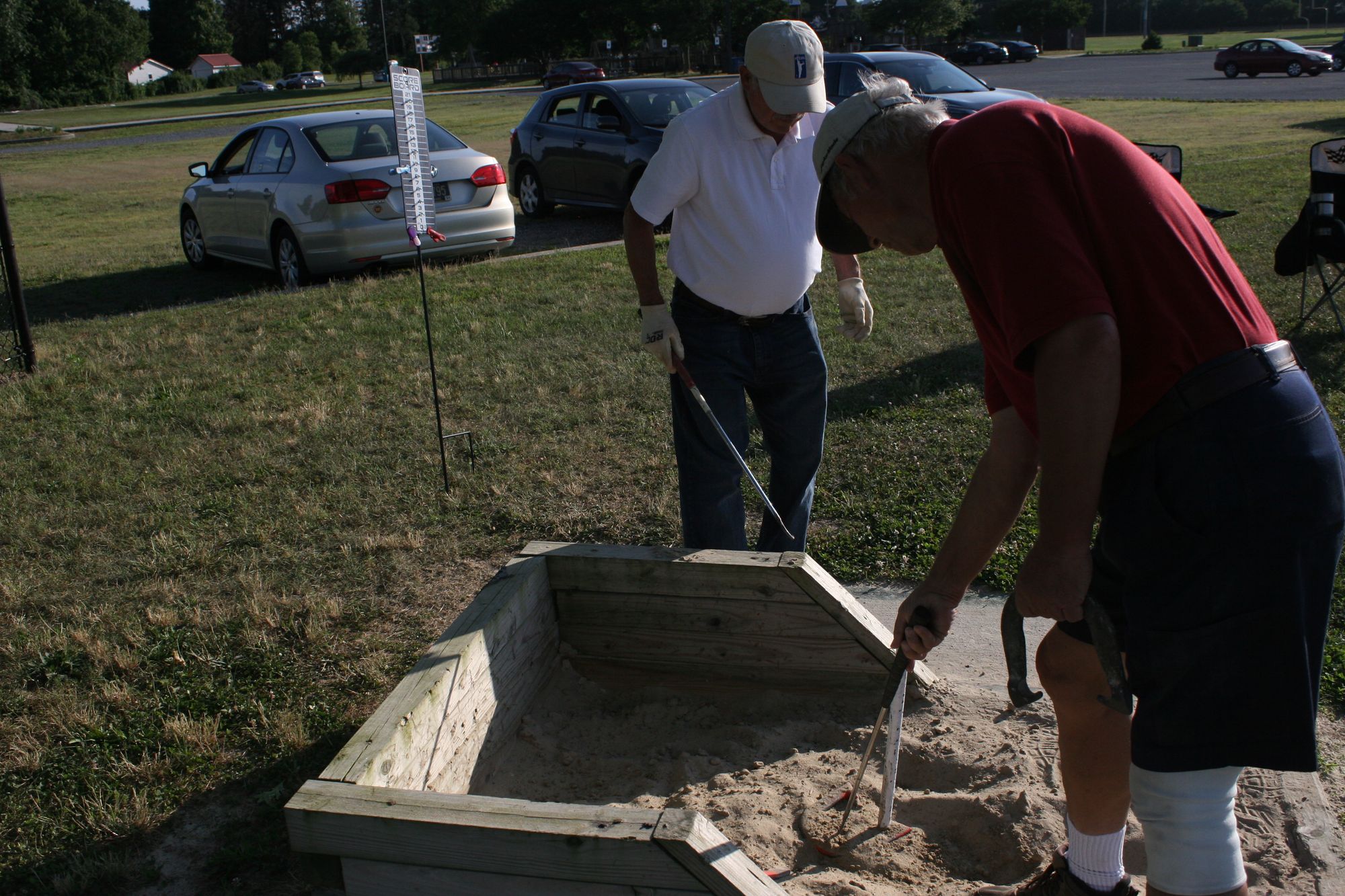
Delmarva may never have been the center of the horseshoes world, but Apgar said it used to be more popular here than it is now, with a big club in Salisbury for example. (If there’s one in Salisbury now, I wasn’t able to find it.)
The Seaford group is part of the First State Horseshoe Club, and travels to Harrington or New Castle County to try out their tournament chops at regulation pits. About 12 to 15 people show up for the event in Harrington, Apgar said.
The pits at Seaford, while fancier than most backyard setups you’ve played on, are not quite up to NHPA’s exacting standards. And while the group takes horseshoes seriously, regulars say it’s about having fun and they welcome people of all experience levels out to the pits.
“I would love to get something started with the kids even,” Apgar said.
“I’m hoping that people will come out, just say, ‘Hey, those guys are having a good time.’” It costs nothing, and they even have spare horseshoes, he said.
One recent week, Apgar said, “we had a young lady pull up, and she’s sitting in the car watching us.” She told him she had been going to pitch with them, but she was deterred by being the only woman there.
“I said, bring a friend next time … we’re harmless, we love horseshoes,” Apgar said.
Thanks for reading! Sign up here to get more local news in your email inbox. To support our journalism, please consider becoming a paying member.
More stories:
